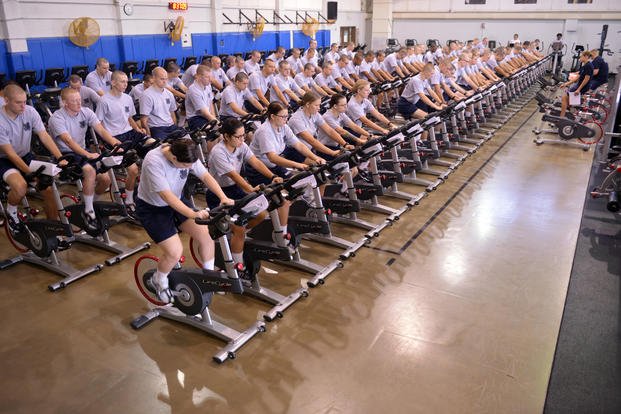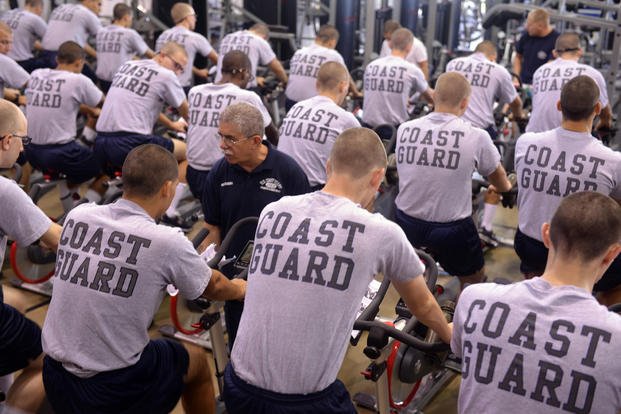Coast Guard women fail weight standards far more often than men and are discharged at rates well in excess of their population in the service, service officials said Tuesday.
That's one of the main reasons behind a new one-year pilot program that will assess fitness based on abdominal circumference rather than a height-and-weight ratio. Announced on Tuesday, the program will begin Oct. 1, Coast Guard officials said.
In the pilot program, the maximum waist measurement for men will be 39 inches, and the maximum for women will be 35.5 inches, said Cmdr. Matt Rooney, chief of the Coast Guard's Policy and Standards Division.
"Women are three times as likely as men to fail the standard taping process" for body fat assessment and be put on probation, he said.
Women constitute about 15% of the active-duty and reserve personnel in the Coast Guard, but they represented 30% of the 480 personnel who were separated from the service from 2014 to 2018 for weight-control failures, service officials said.
About 500 men and women are on weight-control probation at any given time, but the officials did not immediately have a breakdown by gender.
"Recent studies show abdominal circumference is a more accurate measurement of overall health risk" than other measurement standards, Coast Guard officials said Tuesday in a news release.
The officials were short on explanations for the disparities between men and women in meeting weight standards, but they pointed to a Rand Corp. study commissioned by the service on "Improving Gender Diversity in the U.S. Coast Guard."
The study, based on 164 focus groups with 1,010 active-duty Coast Guard women, was intended to analyze why "women leave the active-duty Coast Guard at higher rates than men."
One of the Rand recommendations was that the Coast Guard "consider modifying the Weight and Body Fat Standards Program to minimize potential negative impacts on female members."
The study said that the focus group participants indicated that "meeting [weight] standards is a particular burden for women and a source of stress that can influence retention decisions," but lack of data prevented Rand from coming to definitive conclusions on why women were failing.
"Unfortunately, historical data on member weight and body fat measurements were not available for incorporation" into the report, the study states.
In deciding on the pilot program, the standards of the other services were not the catalyst for the change, but “we researched the Air Force and Navy programs,” Rooney said, adding that the Coast Guard’s new standards are in alignment with overall Defense Department policy.
In a statement, Coast Guard Commandant Adm. Karl Schultz said the new pilot program is the "result of proactively listening to our service members, addressing potential inequities, and seeking solutions to ensure the health and wellness of our workforce."
More information on the Coast Guard's Weight and Body Fat Standards Program can be found here.
Editor's Note: This story has been updated to show that the Coast Guard researched Air Force and Navy programs, based on corrected information from the service.
-- Richard Sisk can be reached at Richard.Sisk@Military.com.













